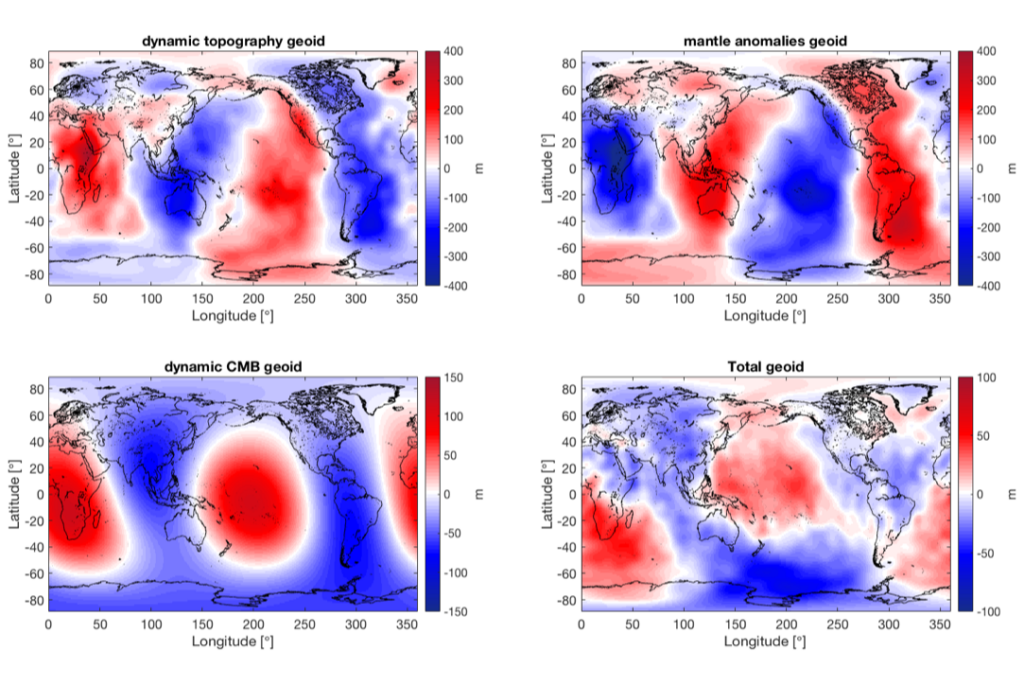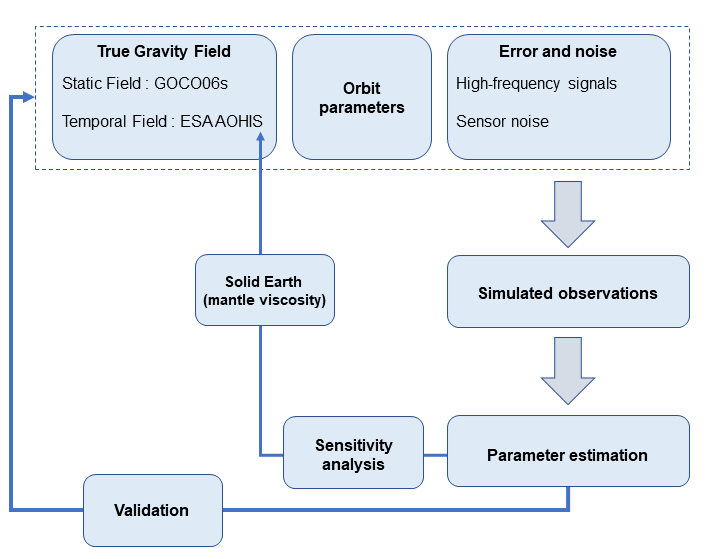Task 2: Satellite gravity-rate data sensitivity to the 3D viscosity structure in contrast to the more classical GIA studies
This task has two major components to understand the aspects of the Earth’s viscosity, for which close collaboration in a multi-disciplinary context is needed: A numerical implementation of high-resolution 3D Earth mantle structure & computing resulting flow and GIA in terms of deformation and gravitational anomalies, an analysis of new data/observational models and their uncertainties. Both aspects will be combined to develop a globally consistent earth dynamic simulation model.

The following sensitivity studies will be produced:
• 1D viscosity sensitivity to gravity, gravity-rate and dynamic topography.
• 3D viscosity sensitivity to gravity, gravity-rate and dynamic topography.
• 1D lithosphere elastic thickness sensitivity to gravity, gravity-rate and dynamic topography.
• 3D lithosphere elastic structure sensitivity to gravity, gravity-rate and dynamic topography.

Workpackages Task 2
• Changing the 1D viscosity and density structure of the mantle.
• Changing the 3D viscosity and density structure of the mantle.
• Different boundary conditions .
• Viscous vs. viscoelastic codes.
• Compare to seismic results enhanced with Root (2020) approach.
• 1D-3D lithosphere effects.
• Effect of 3D viscosity, density, and temperature structure on GIA observables.
• Sensitivity of melt content, crustal structure, and composition.